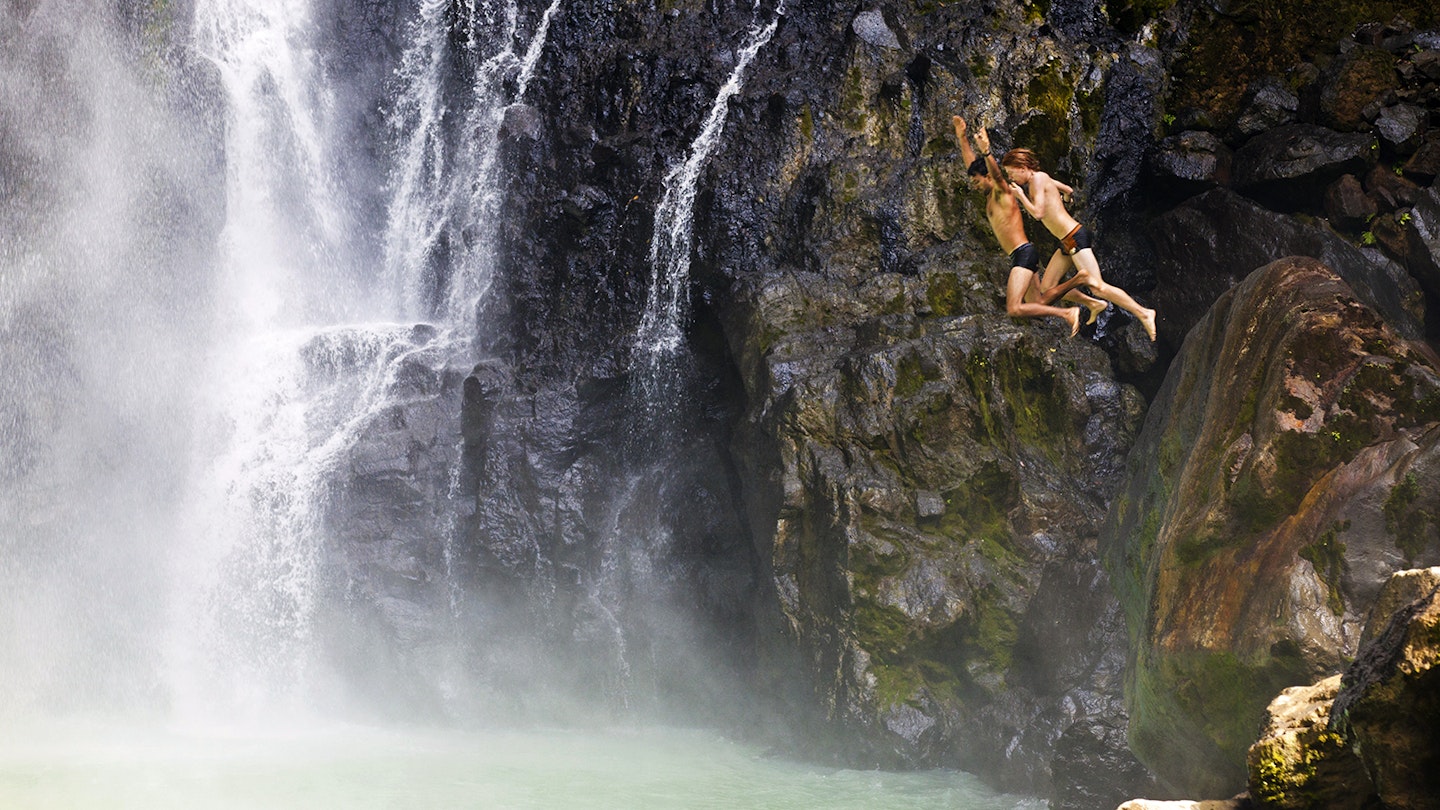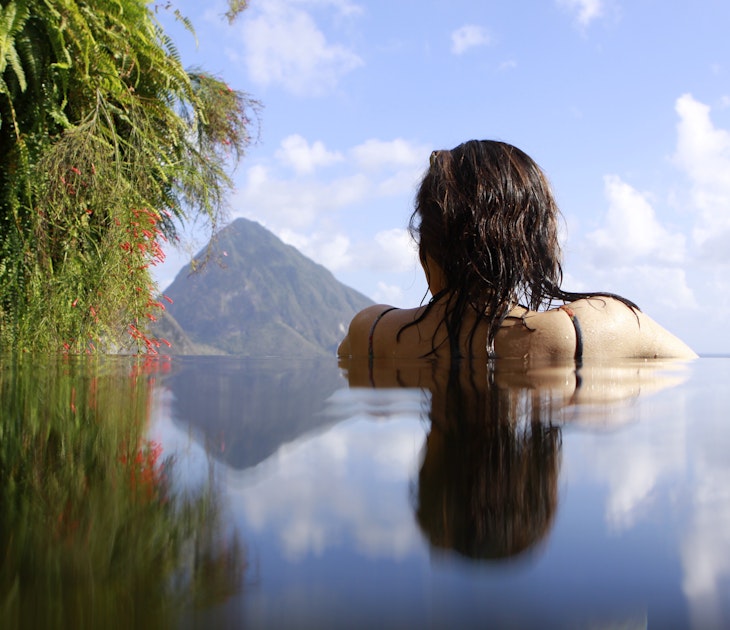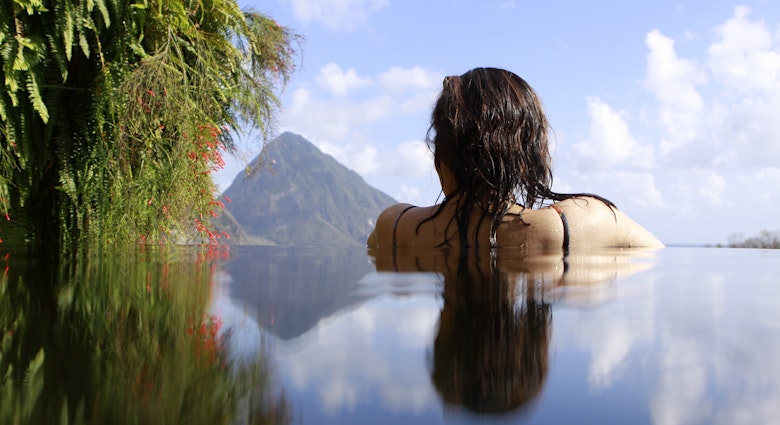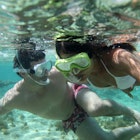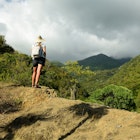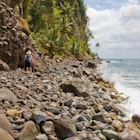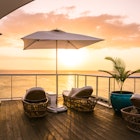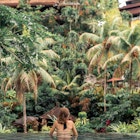The Caribbean’s self-proclaimed nature island, Dominica is a small seedling on the map in the same garden as honeymoon favorites St Lucia and Antigua, yet a world away in spirit. It’s also definitely not the Dominican Republic, which is a fact that (understandably) confuses quite a lot of people.

Fern forests and skyscraper coconut palms cling to Dominica’s impenetrable mountains: this is an island that rests on its leafy natural laurels, and its focus is on back-to-basics outdoor pursuits. In 2015 a developer broke ground on what will become the island’s first resort, but for now Dominica is clinging on to its jaunty crown as the alternative king of the Caribbean; a place where rustic guesthouses rule the roost, the rum punch flows cheaply and travelers can eat street food with locals.
Here are our tips for the perfect Caribbean adventure that shouldn’t burn a hole in the wallet.
Hike, swim, gawp at Mother Nature
The saying goes that the best things in life are free, and in Dominica it’s almost true. For a disproportionately meager US$12, you can get a weekly pass to many of the island’s premier natural attractions. Every government-run national park is included in the ticket; so that means Dominica’s famed Emerald Pool (and the Unesco-listed Morne Trois Pitons National Park in which it sits), swim-through Titou Gorge, twin Trafalgar Falls, historic fort-bearing Cabrits National Park and atmospheric Indian River waterways, are all accessible for little more than a song if you’ve got your own wheels. The even better news is that many of these are easy to explore without a guide (but be sure to check advice from the National Parks Division offices and rangers).
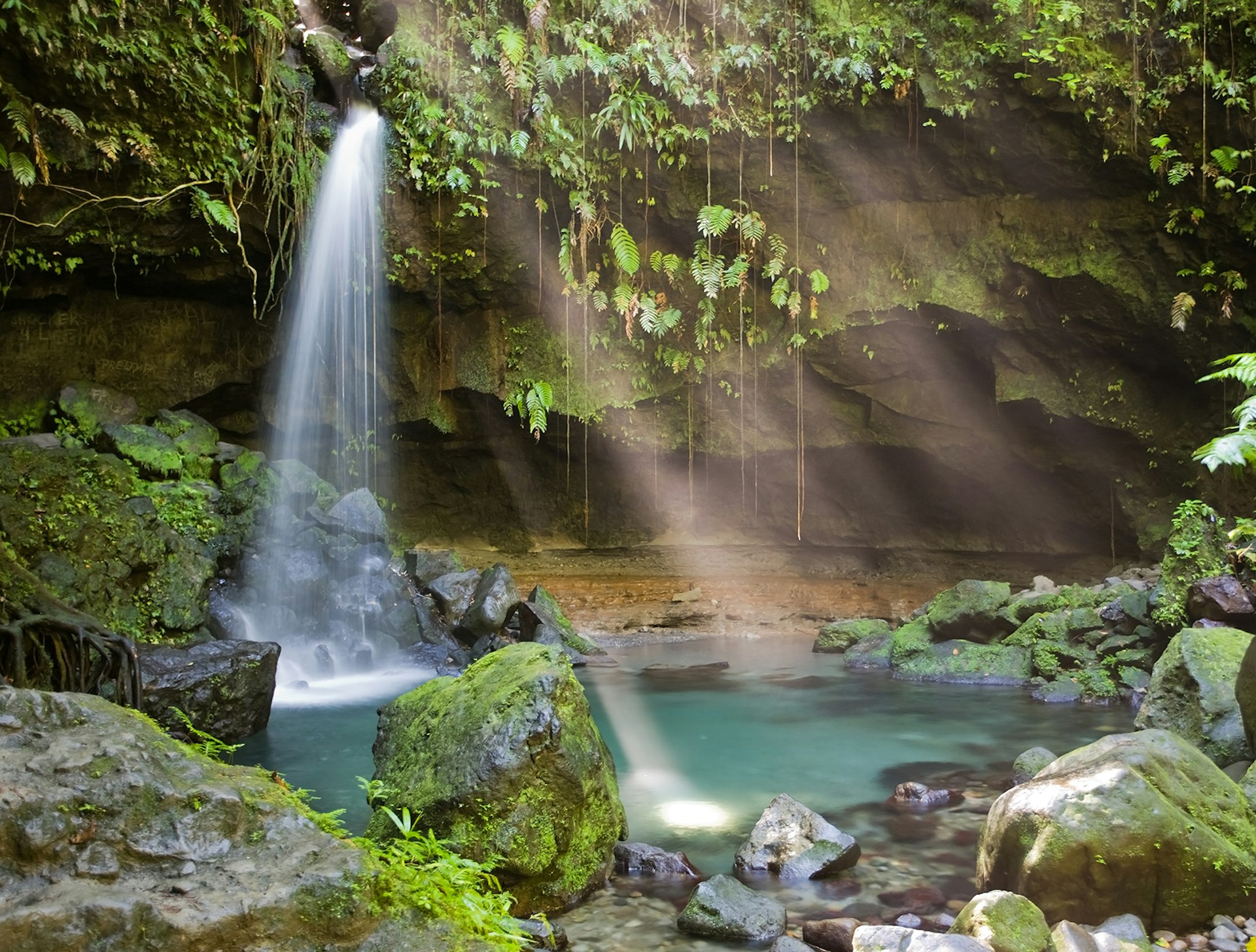
Grab breakfast with the locals
On Sunday mornings, Roseau residents can be found at an unlikely roadside locale at Fond Cole, just north of the capital. Forget street food; this is more like highway haute cuisine. A skillful chef dexterously pummels dough to make bakes (deep-fried donut-type snack breads) while her side-kick doles out hot spiced cocoa tea into polystyrene cups. The star of the show is an incredibly fresh fish salad of cucumber and mahi-mahi, caught locally off Dominica’s shores and infused with rosemary. This slap-up meal will set you back less than EC$15 (about US$6).
Snorkel Champagne Reef
The best way to keep down the cost of a snorkeling trip in the Caribbean is to skip the boat. Luckily, on Dominica that’s actually possible because the underwater circus is found just beyond the shore at Champagne Reef – so called because of a natural phenomenon that makes trapped volcanic air bubble up out of the rocky seabed like champagne bubbles. Snorkelers and divers walk straight in off the beach to find lobster, parrot fish, trumpet fish, hawksbill turtles and more; a 1.5-hour snorkel tour with Champagne Reef Dive & Snorkel (champagnereef.com) costs US$19, while a one-tank dive will set you back US$60.
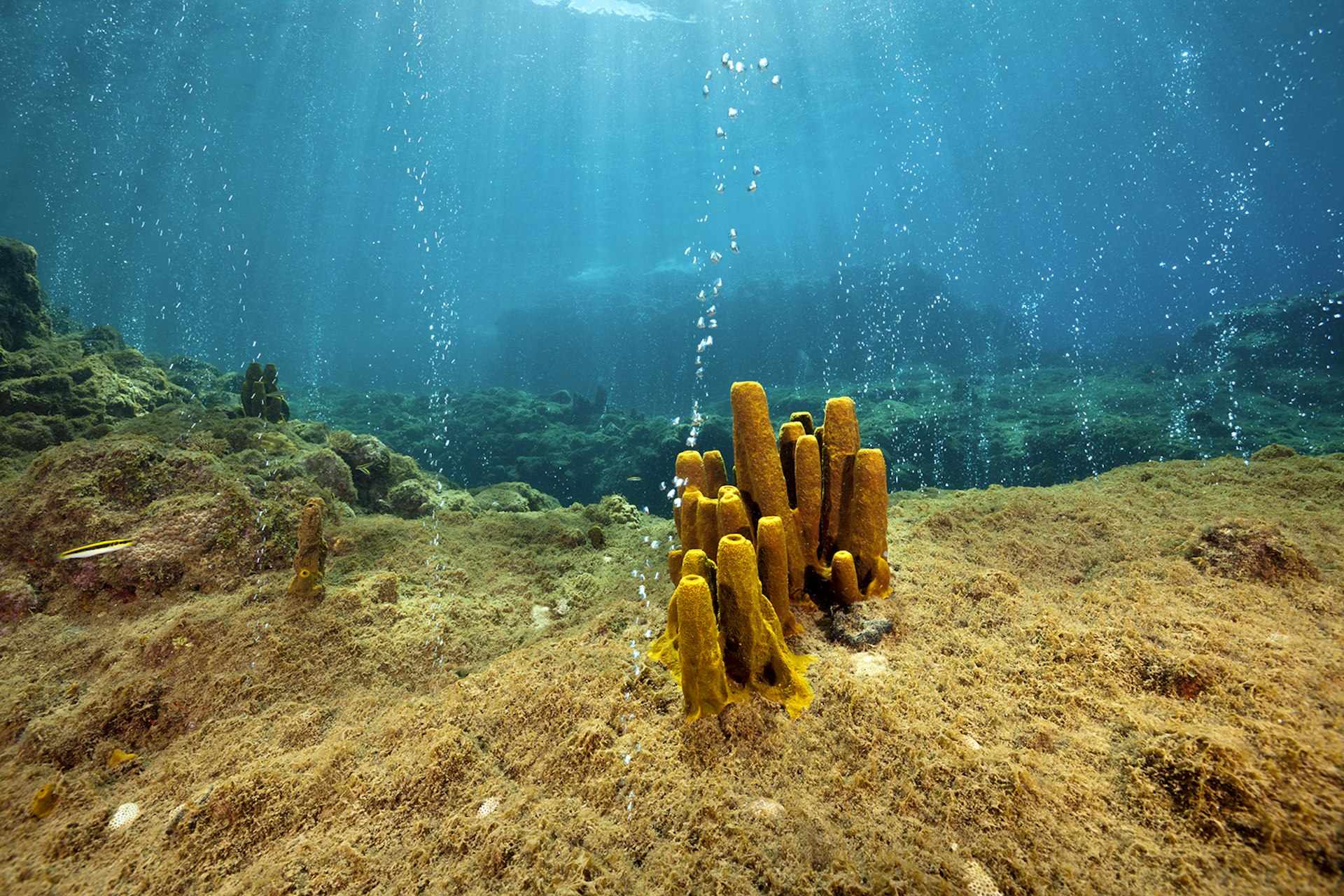
Visit a jerk shack
Locals rejoiced when I Cho Jerk Shack & Bar, devastated by Tropical Storm Erika, rose from the ashes just a month later. It was a remarkable feat considering a flash flood all but swallowed the roadside venue just north of Canefield Airport, and locals have been quick to pick up the jerk scent again. It’s a simple affair with rough wooden picnic tables, an open-sided bar and pop-up film projector showing nightly movies. But the succulent fiery jerk – rubbed with allspice, cinnamon, nutmeg, scallions, chive, thyme, vinegar, garlic and hot pepper – has a divinely complex flavor and is a bargain to boot: from EC$4 for chicken wings, to EC$20 for a meal of whole jerk red snapper.
Stay at Hibiscus Valley Inn
Rural Hibiscus Valley Inn would be a treat anywhere in the tropics, but in the Caribbean it’s a downright delight: cheap, homey and in tune with its natural and cultural surroundings, it’s the sort of place where the owners collect locally infused rums, champion the home-grown Dominican beer and will happily drive guests out to surrounding villages on the weekends for games of dominoes or local knees-up. There are three grades of accommodations to choose from, including basic ensuites (from US$39), beautiful rustic wooden cottages (from US$53) and a self-catering five-bed room ideal for families (US$115), spectacularly sited right in the thick of the rainforest. Plus, there’s a new waterside bar and fire pit camp.
Like many accommodations across the island, Hibiscus is situated very close to the end of one of the segments of the Waitukubuli National Trail (waitukubulitrail.com) – Dominica’s excellent long-distance hiking trail, which traverses the length of the island. Base yourself here and you can roam the trail from your doorstep, saving on some of the transport costs associated with hiking parts of the trail.
Relax at Bubble Beach Spa
There’s more than a whiff of entrepreneurship about this DIY ‘spa’, set up on a patch of village beach in Soufriere by local Dale Mitchell. Rocks have been piled high to carve out natural hot pools on the seafront and the water is heated by the same underwater volcanic forces that create the bubbles at Champagne Reef; the deeper you dig, the hotter it gets. It’s a sublime spot for a sunset cocktail in the Caribbean Sea set to a soca soundtrack or a weekend beachside barbecue. A chicken-and-rum-punch dinner will set you back EC$11-12, while the pools and view are free.
Picnic at Kalinago Barana Aute
Dominica is unique in that it is home to the Caribbean’s only remaining population of Carib Indians – the islands’ indigenous peoples who were all but wiped out by Spanish settlers and slave raiders by the end of the 16th century. In 1903, a 3700-acre swathe of land bordering the east coast was bequeathed to the Kalinago (the preferred local term for the Caribs) to preserve their culture. It’s possible to learn more about their traditional way of life at Kalinago Barana Aute (kalinagobaranaaute.com) – a model village of sorts, but also a place where the Kalinago people still come to congregate, stroll and wash clothes.
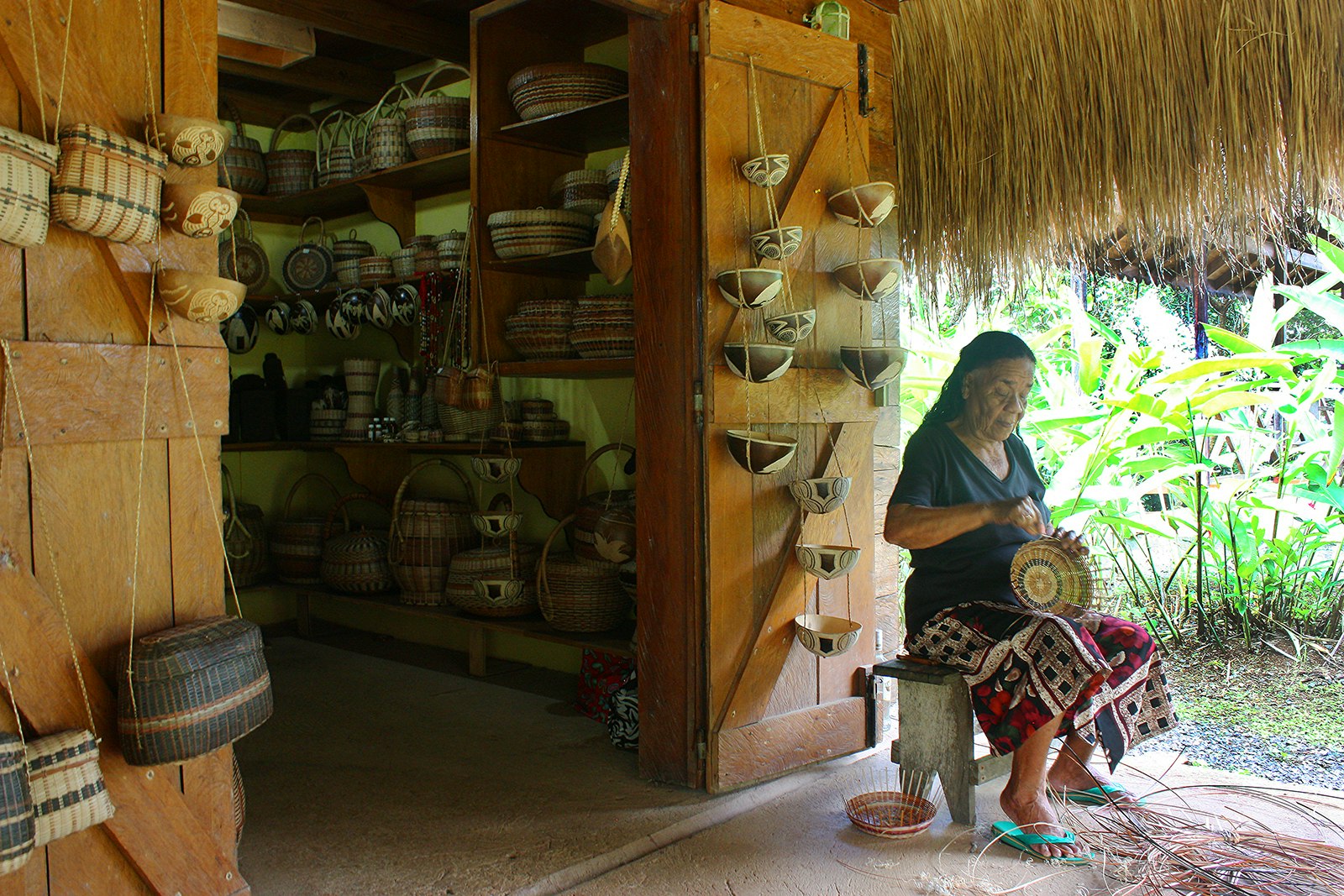
Before your tour (EC$26), grab a chewy cassava bread (EC$5) from a roadside bakery for a cheap lunch in the basin of Barana Aute, where a picnic table and hammock overlook a peaceful natural pool that trickles over a sheer cliff to sublime sea views.
Eat lunch at ‘the roundabout’
It’s Saturday. The working week is done, and where have all the Roseau suits gone? Well, they’ve gone to let their hair down, so to speak, at the Pont Casse Roundabout, another unlikely roadside food scene that will have you mingling with Dominican village society. Quiet as a mouse during the week, the island shack is party central on weekends when locals come from miles around for rum and comfort food.
Take a deep breath and dive in; order the silky black pudding (EC$5) and smoked pork callaloo (EC$12) – a meaty broth thickened with dumplings and leaves of the dasheen (a local name for taro, a starchy root vegetable). Considering you’ll have to drive to get here, opt for a zingy, bright-red homemade sorrel juice (EC$4) instead of a rum. Dominicans don’t tend to eat a big evening meal (making eating out for dinner an expensive, tourist-driven affair), so savvy travelers will save money by following the locals and going big on lunch instead.
Explore Hampstead Estate
Anybody who knows Dominica will tell you that Batibou beach is the best stretch of sand on the island. It isn’t just the blonde grains and azure waters that make this true, but also its lack of development and castaway setting – the beach is hidden down a vertiginous forested track (four-wheel-drives only; US$5 access fee on foot or by car). When you arrive you'll find pristine sands shaded by languid coconut palms, a rickety beach bar and come-hither hammocks; it’s the trump card of Hampstead Estate (hampsteadestate.com), a plantation on the island’s east coast that dates back some 400 years. Since the 1960s, it has been owned by one of Dominica’s most famous families: the Douglases, one of whom (Rosie) served as prime minister in 2000.

The estate includes a string of beaches and eerily overgrown yet well preserved ruins of the 18th-century sugar factory (well worth a visit in their own right), and the owners run fun river drifts down to Number One beach, which was one of the island’s many Pirates of the Caribbean filming locations. But the best part? It’s got to be the estate’s guesthouse where the former president used to retreat for holidays, within walking distance of that gorgeous beach. Ramshackle, delightful and cheap: at EC$100 (US$40) a night, the double rooms are a snip, particularly for self-caterers as the kitchen is available for guests’ use.
Lorna Parkes traveled to Dominica with the support of the Dominican Tourist Board (www.dominicaadventures.com). Lonely Planet writers do not accept freebies in return for positive coverage.
